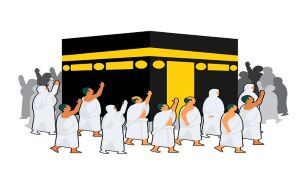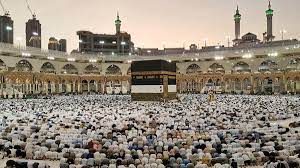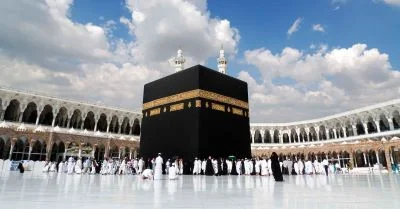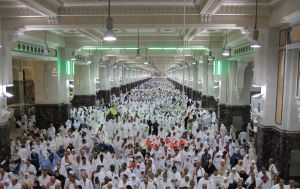Hajj: Its Rulings,Pillars and Obligations (Part 2)
Tawaaf means circling around the Ka’bah seven times. The tawaaf has certain conditions, acts, and manners that must be followed.
The manners of performing the tawaaf and its rulings and obligations
- The Second Pillar:
The Tawaaf: Tawaaf means circling around the Ka’bah seven times. The tawaaf has certain conditions, acts, and manners that must be followed.
The conditions for validity of the tawaaf are as follows:
- A Muslim must have an intention to perform tawaaf before commencing because one’s rewards are based on one’s intentions. The intention is important because the heart must be ready to perform an act of worship.
- The pilgrim must be pure and free of filth and dirt when performing the tawaaf because it is like a prayer.
The Prophet ﷺ said:”Tawaaf around the House (Ka’bah) is like the prayer except that you all speak during it Therefore do not speak except with good (words).” [At-Tirmidhi] - The Muslim must also cover the private parts of his body because tawaaf is like a prayer (act of worship).
قال رسول الله ﷺ الطَّوَافُ حَوْلَ الْبَيْت مثل الصَّلاةِ إِلَّا أَنَّكُم تَتَكَلَّمُونَ فِيه فمن تكلم فيه فَلا يَتَكَلَّمُنَّ إلا بخير (رواه الترمذي)
Therefore, if a person performs tawaaf in a state of impurity or his private parts are exposed, then his tawaaf is invalid and it must be remade. - The tawaaf around the Ka’bah must be done inside of the masjid, even if it is done at a distance from the Ka’bah.
- The (Ka’bah) should be on the left of the person performing tawaaf, while Circling the Ka’bah in an anti-clockwise direction.
- The tawaaf should be seven circuits (trips around) the Ka’bah starting from with the Black Stone (Al-Hajr Al-Aswad) and end with it, because the Prophet ﷺ did this.
- The circuits around the Ka’bah should be performed in close succession. There should be no separation between them without a valid need. If a person pauses between them and does not perform them in close succession though there is no need for pausing, his/her tawaaf is invalidated and has to be repeated.
- The Sunan Acts of Tawaaf:
- Ar-Ramal The person performing tawaaf walks quickly with short, close footsteps.
- Idtibaa’. To uncover the right shoulder (only for men).
- Kissing the Black stone when starting tawaaf, if it is possible.
- Supplicating during tawaaf.
- Touching the Yemeni Corner with the right hand and kissing the Black Stone every time one passes by them, if possible.
- Supplication at al-multazam after completing tawaaf. (al-multazam is the place that is between the door of the Ka’bah and the Black Stone).
- Praying two raka’aat behind the standing place of Ibraaheem (Maqaam Ibraaheem) after completing tawaaf.
- Drinking from the water of Zam-zam. tawaaf should be performed with humbleness and an open heart for Allah A person who performs tawaaf should not speak unnecessarily.
Furthermore, one should not harm anyone with words or deeds and one should utter remembrances of Allah often.
What we learn from the lesson:
- Tawaaf is the Second Pillar of Hajj.
- Tawaaf means to circle around the Ka’bah seven times.
- Tawaaf around the Ka’bah is like a prayer.
- The tawaaf is performed in an anti-clockwise direction and should start at the Black Stone and end at it.
- There are many Sunan Acts of the tawaaf.
- Tawaaf should be performed with humbleness and an open heart for Allah.
“Discussion:”
- Why is it important for a Muslim to have infention before commencing with the tawaaf
- Why do you think that a Muslim must cover the private parts while performing tawaaf?
- Name one condition that makes the tawaaf invalid.
- In which direction is the tawaaf performed?
- Why do we as Muslims start the tawaaf at the Black stone (Al-Hajr Al- Aswad) and end at it?
- Name two Sunnah acts that are performed after the completion of tawaaf.








